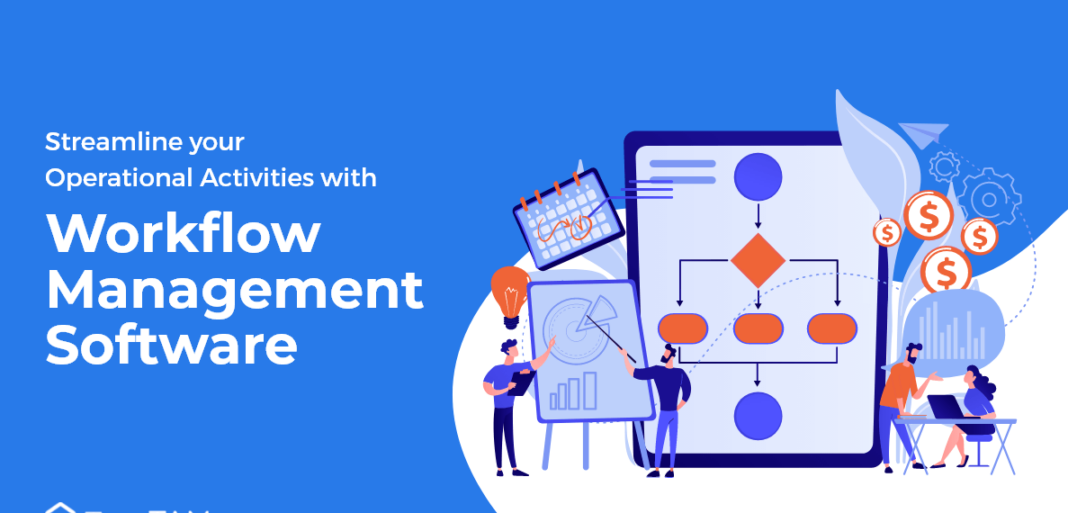Best workflow management software will be described in this article. The top 10 workflow management programmes are described here, along with screenshots, feature summaries, and cost.
Workflow management software directs the progress of a project’s work from A to Z. The torrent of project tasks that must be completed along the way are guided by a strong workflow tool, and project outcomes take shape as they move through various procedures, checks, and balances.
You may transform concepts into procedures and ideas into products by using workflow management software, which provides a layer of structure and visibility to your workflow process. With the use of these tools, you can make sure that the project is delivered correctly and that its quality is upheld.
These tools let you manage workloads, create and share documents, schedule tasks, engage with others, and assess your progress. Given the increasing complexity and quick speed of our multi-tasking, remote workforce, workflow management systems are now essential for maintaining team cohesion.
You can accomplish much more than a to-do list by providing your team with an entire ecosystem of business process management software (also known as BPM tools) for developing effective, optimised workflows. By utilising the new capabilities provided by automation and the accessibility of useful data for decision-making.
Choosing the finest workflow management software for your team, your company’s objectives, and your budget is tricky. Here is a list of the top business work management tools along with important factors to take into account when selecting a workflow tool.
Top 10 Best Workflow Management Software in 2022
Top 10 Best Workflow Management Software are explained here.
To help you understand how we compiled this list of workflow management software, we’ve included a table at the bottom of the article that compiles basic information on the products discussed in this article as well as an explanation of our selection criteria.
1. monday.com

Most effective for automating manual processes One of the few workflow systems that takes pride in “not being a project management tool” is monday.com, an award-winning platform. They eliminated many of the extraneous features found in standard workflow tools and instead concentrated on creating a structure and perspectives that make it clear how the task should be completed.
The actions you must take to complete each work are listed on a board after the task itself. If you’re currently utilising spreadsheets for project management, Monday.com is a fantastic option because it can complete your workflow with alerts, notifications, integrations, and automated procedures. It’s basically comparable to a spreadsheet (a nicer-looking one). monday.com’s features include a customisable task board for organising task status, assignee, due date, hours worked, and more.
The tool provides a variety of work views, including list views, views by location on a map, views on a Kanban board, and more. Additionally, it provides a fantastic project dashboard with a Gantt chart-style overview for viewing all active projects.
In addition, Monday.com offers big picture views through dashboards that compile information from many boards, improving the ability to track progress. However, it doesn’t provide much in the way of financial reporting, so you should look at third-party integrations for budget-related reports.
Slack, Google Drive, G.mail, Google Calendar, Jira, GitHub, Trello, Dropbox, Typeform, and numerous other connections with monday.com are reachable through Zapier. The business’s customer support team is accessible by phone or email around-the-clock for assistance setting up integrations. This is another workflow management software.
Monday offers a 14-day free trial and prices start at $6 per user each month. For up to two people, they provide a complimentary plan.
2. Kintone
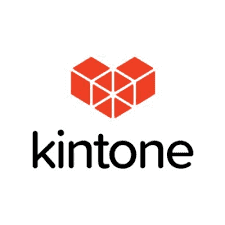
Units at Volvo Trucks North America, Japan Airlines, Shiseido, LiveWell Colorado, and more than 23,000 businesses worldwide use Kintone, a configurable workflow management application. Your existing spreadsheets can be used to develop a range of customisable “apps” for data management, business processes, and workflows thanks to their innovative approach to workflow management. Project management, sales CRM, customer databases, expenditure reports, shared to-do lists, equipment management, product feedback, and many other uses may all be customised using Kintone apps.
By removing and dropping the components you want to see onto the page, Kintone enables you to create your own workflow management apps, including tables, rich text fields, drop-down menus, date fields, number fields with built-in calculations, spaces for attachments, user or group selection menus, and more. You may design your workflow management solution however you want it to look and function.
The ability for managers to monitor all aspect of their teams’ workflows, from individual tasks and project data to multi-step approval processes with branching conditionals, is what makes Kintone so excellent for workflow management. Users may swiftly enhance their workflows as they go and tweak processes as needed thanks to Kintone’s adaptable workflow management platform.
The capacity to filter tasks by data field or team member to generate custom reports or dashboard views, as well as the automation of reminders and handoffs between team members for multi-step processes, are supporting capabilities for workflow management. Workflows can also be viewed, modified, and updated via the platform’s mobile app or desktop web browser.
Teams can talk about workflows and tasks both directly in the workflow apps and in topic- or project-based threads thanks to Kintone’s built-in communication tools. Everything your team requires is organised in designated “spaces,” including task-tracking tools and searchable conversation logs.
It can be questioning to know where to begin because Kintone can be customised in a plethora of ways. For a fast overview of how the drag-and-drop builder functions, read the introductory blog “What Can You Build with Kintone?” or watch Creating an App from Scratch.
You can extend the functionality of Kintone with both free native plugins created by the Kintone team and paid Zapier integrations or API integrations with other tools like Slack, Gmail, Google Calendar, Outlook, Tableau, Dropbox, Salesforce, HubSpot, Eventbrite, WordPress, QuickBooks, MailChimp, and many more. This is another workflow management software.
Kintone has a $5 minimum user requirement and charges $24 per user each month. No recognition card is needed for the free 30-day trial, and charitable organisations and teachers can pay less. The free trial procedure includes a free bespoke app creation from the Kintone team as well.
3.Next Matter

A reliable partner with management consulting and technical experience, a customised implementation and onboarding plan, technical support for platform design and integration, and guided rollout and onboarding sessions for teams are all included with Next Matter, a workflow management platform for scaling businesses.
For tasks and workflows, Next Matter includes customization and automation features, as well as interfaces with well-liked third-party products. You accomplish’t need to know how to code, hire consultants, or have project management expertise in IT to grow operations with Next Matter. Also check church accounting software
Using building elements like barcode scanning, electronic signatures, and external access, Next Matter enables you to create and deploy no-code operational tools and solutions.
The following applications are among those that Next Matter integrates with: BambooHR, Basecamp, Box, DocuSign, Dropbox, Freshworks, Gmail and Google Workspace, Hootsuite, Hubspot, Jira, MailChimp, Microsoft Dynamics 365, Miro, Oracle Suite, Quickbooks, SAP ERP, Sage, Salesforce, Slack, SurveyMonkey, Trello, Workday, Xero, Zendesk, monday.com, and other programmes.
4. Process Bliss
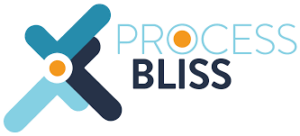
This is another workflow management software. For teams and small to medium organisations, Process Bliss is a potent workflow management tool. The application has robust template features, a great workflow builder, and a familiar process flowchart interface that enables decision branching, loops, dependent due dates, and data and file capture.
Templates are centralised in a folder structure that is simple to use and enables permissions. Using the workflow builder, users can also create their own templates. Teams can designate various owners for each stage of a task and generate specific notifications for owners. Tasks can be designed from scratch or using templates. To ensure that they are completed, tasks can also be automatically scheduled as recurring.
Additionally, the tool has built-in process improvement capabilities, which are made possible by tools for process quality analytics and template feedback. It also has the ability to record when steps can’t be completed and why, which helps to continuously improve processes.
5. Kissflow

Workflow management software is like a buffet. Kissflow provides a single digital workspace for all types of work, both manual and automated, by combining projects, cases, and collaboration with its main capability, workflows. Users can develop any number of apps using the visual interface and no code by dragging and dropping objects. Users have the option of creating an app from scratch or building on top of pre-existing apps from their library that cover various categories like HR, Finance, or Procurement. This is another workflow management software.
It takes very little effort to learn the platform because it is so intuitive. Users may adjust as needs change or as teams grow thanks to the adaptable workflows and dynamic routing. Users can assign tasks to team members with ease and prioritise their workload. When a task is finished or needs attention, users receive immediate notifications.
Users can also track job flows, find bottlenecks, and greatly increase productivity. G-suite and Kissflow are inextricably linked, and users can use Kissflow’s open API to combine with any other product.
Nobody else on the market is quite like Kissflow. This application offers extensive reporting features like KPI dashboards and ad-hoc report configuration along with trigger-based workflows that are extremely flexible. Kissflow is a useful tool for teams or projects whose structure, procedures, or methods are subject to sudden change.
Kissflow may not offer all the functionality needed by users who are designing processes that rely more on system integrations than on manual labour, though.
6. Admation
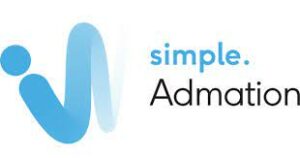
Project management software called Admation is designed for marketing teams and agencies that desire the advantages of several aspects combined into one all-encompassing application. Admation gives users the ability to manage the complete production cycle of their campaigns, from project workflow to resource management to managing the entire approval workflow.
This is another workflow management software. Admation provides an amazing selection of project tracking software features and solutions with a user-friendly interface. An intuitive foundation for managing all parts of your work is provided via a central dashboard, which gives you full visibility over your projects and resources.
Features include a full brand archive, permissions & access levels, tags & keywords, a secure digital storage system for your finished ads, and more. They also include briefing templates, project resource templates, project timelines, scheduling and task assignment, document approval, capacity planning, department dashboard & calendar, resource allocation, timesheets, and time tracking. Email systems and Mediaocean, formerly BCC, an accounting software for advertising agencies, are integrated.
Admation offers a free demo and free trial upon request and charges $30 per user every month.
7. Orchestral

Orchestly is a drag-and-drop platform for workflow management software that assists in automating, managing, and optimising conventional business workflows and SOPs. It helps automate workflows across departments including HR, Marketing, Finance, IT, and Legal and was created for medium and corporate enterprises in any industry.
This is another workflow management software. Business information can be easily collected using customizable forms. On a puff and drop workflow builder that doesn’t require in-depth technical knowledge, both basic and complex workflows may be mapped as flowcharts in a few minutes.
By placing the appropriate individuals at the appropriate phases of a process, you can ensure responsibility. Users may be asked for contextual information such as comments and attachments at any time. By establishing if-then rules to direct the flow, decision making can be automated. By automating phases based on condition or time, manual labour can be removed. Business rules can be used to handle process exceptions.
Requesters can follow every development in real time and receive updates on their requests. The workforce is fully aware of what has to be done when. You can construct your own process-specific reports to examine and enhance your operational KPIs. Ready-made reports give you insightful analysis of your process bottlenecks and redundancies.
Role-based access control and an Active Directory are features of Orchestly. You can construct your own third-party app extensions as widgets and integrate them with your other tools. Through Zapier and Zoho Flow, you can also connect to other tools. Slack, Dropbox, Google Drive, and Zoho Sign are just a few of the pre-built extensions available in the marketplace.
Orchestly has customizable user-based pricing that starts at $8 per user per month and a 15-day free trial period. You can automate the workflows in your company with the aid of an installation team.
8. VOGSY

Through the unification of crucial workflows and data, VOGSY, a workflow management solution, assists Professional Services Organizations (PSO). On the Google Cloud, this is accomplished via a single, user-friendly platform that automates all activities from quote to cash. This is another workflow management software.
By using VOGSY, you can manage your quote-to-cash workflow together with opportunity management, producing and sending quotations to clients, developing projects, managing resources, tracking time, and management. Throughout it all, VOGSY generates data in real time on a variety of topics, including project margins, employee billability, and even the overall P&L of the company. There are helpful connectors with other G Suite applications like Sheets and Drive along the way.
The UI is inspired on Google’s material design, making it immediately recognisable & intuitive to G Suite users. An in-product setup assistant and a dedicated customer success manager provide setup guidance, and real developers, not call centre agents reading from scripts, provide setup support. This indicates onboarding is measured in days and weeks, not months and quarters, and won’t break the bank.
For larger organisations with tech stacks that are out of control and wish to consolidate their data and operations back into one, manageable location, or for small to mid-sized Professional Services Organizations looking to create strong foundations for future expansion, VOGSY is appropriate.
All of the top CRMs, including SalesForce and HubSpot, as well as accounting software, like QuickBooks and Xero, are integrated with VOGSY, enabling a smooth transition from lead creation to your bank account.
The monthly fee for VOGSY is $19. There is no minimum commitment; you are charged monthly in arrears for the amount of customers you activate. Additionally, they provide free workshops and demos.
9. TeamGantt
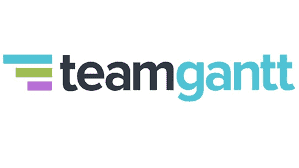
Workflow management tool TeamGantt is accessible on any OS and operates directly in your browser. With this incredibly user-friendly Gantt software, users can plan and manage projects while inviting coworkers, teammates, and friends to watch and update their work.
To organise your workflow, create a Gantt chart online by simply dragging and dropping your jobs; this software is easy flexible and has a short learning curve.
You can keep track of all of your tasks, documents, chats, and team availability statistics in one location using TeamGantt’s workflow tools. Additionally, you may immediately link chats and documents to the task or milestone in question.
Slack, Trello, Basecamp, Google Calendar, iCal, & Outlook are all integrated with TeamGantt. Use TeamGantt’s open RESTful API to create a bespoke integration.
Up to three people and one project can use TeamGantt for free. Paid plans start at $24.95 per month.
10. Asana
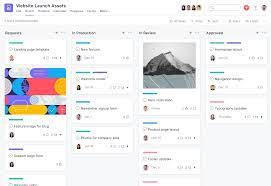
Teams accustomed to using Trello will find Asana easy to use. Similar to Trello, Asana’s workflow is based on kanban-style cards and is visually straightforward and easy. In fact, you can sync your Trello boards with Asana so that your teams can work in the app of their choice if you already use Trello but want to add some crucial features to your workflow. Actually, the use case for all of these workflow apps is the same: they’re both excellent for small-to-midsized teams who collaborate frequently and require a central location to keep track of all of their projects, deadlines, and reports. Asana’s free version, which offers limitless projects and straightforward dashboards for up to 15 team members, may be sufficient for small, developing teams that don’t need a tonne of functionality at initially. At least for the first few months. This is another workflow management software. Also check identity verification
Asana is a more straightforward tool than the other workflow management software products on this list, making it flexible and lightweight (which may be good if you know you won’t need a tonne of highly customizable workflows). It doesn’t have a tonne of sophisticated features, but it does provide a simple, useful task management tool that is simple whole use. A visible progress chart and a dashboard that may be customised are some reporting capabilities. Basic automation is also available, such as generating task dependencies, converting processes into templates, and setting up automatic status updates.
You may add more time-tracking, reporting, and communication features to Asana by integrating it with one of the more than 100 other apps available.
Asana starts at $9.99 per user per month. For up to 15 team members, there is also a free edition.
Do you need assistance choosing the best Workflow Management Software?
To assist you in finding the ideal solution, we have teamed with the software comparison website Crozdesk.com. Workflow management software advisers from Crozdesk can provide you with unbiased assistance and help you narrow down the software options that best meet your unique requirements. As a result of our association, you have free access to their individually crafted software selection guidance and community-negotiated discounts, which eliminates the need for tedious research.
You can submit your requests in under a minute, and they will contact you without charge or obligation. Their team of software specialists will send you personalised product shortlists that include the finest solutions for your unique needs (by phone or email), and they can even put you in touch with the vendors of your choice.
Workflow Management Tool: Selection Criteria
Some workflow automation programmes are more thorough than others; some concentrate on workflow software (assigning tasks, creating dependencies, tracking deadlines). Workflow diagram software or flowchart software are other names for this type of application.
Some companies provide a stronger workflow management system as a software of a larger resource management or project management software. As a result, they supply a collection of extra business capabilities for producing process forms, managing invoices and payments, modelling data, managing a project portfolio, and more.
We focused on a few essential factors when choosing workflow management software. The following are the crucial capabilities of an effective workflow tool:
1.Automatism
Utilizing workflow software is intended to do this. We look at the products’ time-saving automation features, including task automation, push notifications, document routing, decreasing repetitive tasks, status updates, and report generation.
The finest software must have capabilities for automation and complete automation customization, including unique workflows, automated notifications, business rules, process automation, and more. Also check floor plan creator software
2.KPI reports
Typically, this is a dashboard containing visual representations of your workflow statistics. In addition to providing team members with information about the progress of their tasks or projects, KPI and metrics reporting also enables management to identify inefficiencies and improve business processes.
3.Deadline tracking
When you’re managing dozens of workflows, it’s simple to lose track of deadlines, even with a dashboard. A workflow tool must have a clear framework for SLA indicators in order to be effective. To assist you in managing deadlines, tools use notifications, color-coding, and dashboard displays that present tasks by due date.
4.Integrations
These days, every endeavour needs a variety of tools. Integration with other business-related apps is a necessary for your workflow management software. Calendars, content management systems, databases, development tools, email and communication tools, payment processing apps, and more are included in this.
5.Price
The benefit you receive from a workflow tool must match the cost you are paying. The best workflow software won’t ask you to pay for users or features that you don’t need. We assess a tool’s pricing based on its clarity, usefulness, and value for the money.
